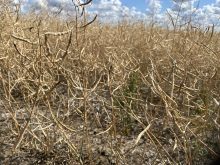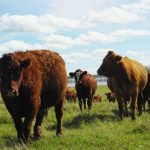The old adage more is better could not be more wrong when adding supplemental
copper to sheep diets.
Though copper is an essential mineral for sheep, there is a fine line between the trace amount required to prevent deficiency and a potentially toxic level.
Copper deficiency is a significant concern in young, suckling lambs, triggering a condition called neonatal ataxia, also known as swayback.
Affected lambs become unco-ordinated and partially paralyzed due to degeneration of the myelin sheaths that surround and protect their nerves.
Read Also

Rural emergency room closures continue to be vexing problem
Staffing issues are at the root of disruptions and closures in hospital emergency departments, both in rural and urban Canadian locations.
Older animals that are copper deficient often produce stringy wool that lacks crimp, has poor strength, and won’t properly take up dyes.
Infertility is also common in sheep with copper deficiency. Those that do manage to become pregnant may give birth to lambs that can’t walk or nurse due to severe neurological abnormalities.
Complete sheep rations typically have 25 to 35 parts per million of copper. Unfortunately, even this small amount can cause poisoning symptoms because copper uptake is influenced by other trace minerals in the diet, especially molybdenum.
If sheep are fed a ration high in molybdenum, copper absorption is reduced.
Under these circumstances, sheep can tolerate higher copper levels in their diets without risk of toxicity.
However, if dietary molybdenum levels are low, copper absorption continues uninhibited. Even a relatively low level of copper can be toxic because all of it is absorbed.
Sheep absorb the amount of copper that is supplied in their diet, not the amount they need. When an excess amount of copper is absorbed, it is shunted to the liver, where it is stored.
After months or years of this, the concentration reaches a toxic level in the liver and it becomes a loaded gun.
In sheep, stress is the trigger for this gun. Stress can be caused by poor nutrition, bad weather or even everyday handling.
Suddenly and dramatically, the liver cells rupture and release large amounts of copper into the blood stream, which in turn causes red blood cells to burst, or hemolyze. This can damage up to 60 percent of the
circulating red blood cells.
Unfortunately, when red blood cells burst, they also release the protein hemoglobin, which is needed to transport oxygen from the lungs to body tissues.
In the blood stream, it quickly changes to methemoglobin, a molecule that can’t
transport oxygen.
Sheep with this acute form of copper poisoning are anemic (low red blood cell counts and low levels of hemoglobin) and weak from lack of oxygen.
Their mucous membranes often turn yellow due to the accumulation of breakdown products of hemoglobin.
If copper poisoning is suspected, it must be diagnosed by analysis of specimens, specifically liver samples, at a veterinary
laboratory.
Diagnosis is paramount because even if a producer has lost only one or two animals to copper poisoning, the rest of the flock is still in danger. The surviving sheep need immediate treatment to prevent them from going into a crisis.
The easiest way to accomplish this is to
reduce copper uptake by adding molybdenum to their rations. This allows the stored copper in the liver to be slowly eliminated.
If copper toxicity is confirmed, the next step is to find the source.
All feeds on the farm must be analyzed for copper and molybdenum content.
In many flocks, copper poisoning has been traced back to a feed mixing error or the inadvertent feeding of a cattle ration, which contains toxic amounts of copper supplements.
A few cases have been triggered by the
application of pig manure to sheep pasture. The relatively high amount of copper in pig feed is passed in the manure and subsequently accumulates in the grass, which the sheep eat.
Jeff Grognet is a veterinarian and writer practising in Qualicum Beach, B.C.















